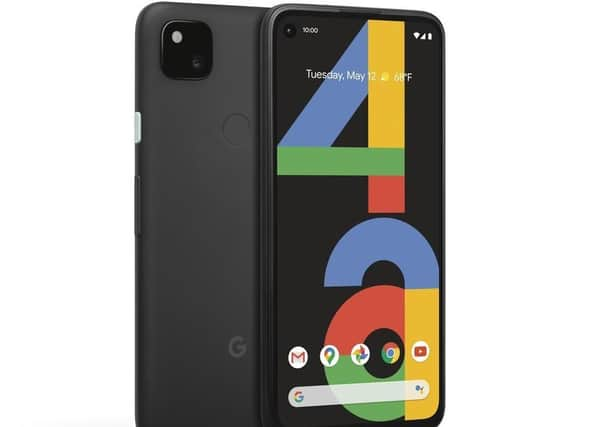Can Google’s Pixel 4a replace your camera as well as your old phone?


Disproving the conventional wisdom that image quality improves with every extra lens that can be squeezed on to the back of the case, the forthcoming Pixel 4a has only one, yet it delivers pictures that many standalone cameras cannot match.
That, coupled with a price tag that cuts last year’s Pixel 4 almost in half, rewrites the rules on what can be expected from a smartphone in the 2020s.
Advertisement
Hide AdAdvertisement
Hide AdThe Pixel 4a does not replace the Pixel 4 but supersedes the 3a, which was also released last year. The case of the new model is slightly smaller than the 3a yet the screen is bigger at 5.8 inches. There is a more powerful processor, 50 per cent more memory and twice the storage space, all for a smidgeon less than £350. A 5G model will be available later for those who wish to upgrade their tariffs.
Google sees its new arrival – and that of the natively 5G Pixel 5 – as the gold standard among Android devices, and as such the most mainstream rival to Apple’s £420 iPhone SE.
The important difference between this and most Android handsets is that although Google develops the software, it does not control the way it is implemented by other manufacturers – Samsung, Sony and Huawei, among them. All apply their own “layer” of customisation on top, to create a distinct user experience. With the Pixel range, however, the look and feel is entirely down to Google, as the iPhone is to Apple. It means amongst other things that it can guarantee to make software updates available for at least three years and to release them as soon as they are available, not several months later. That’s unusual for Android, though it’s still short of Apple’s five-year support.
Google’s end-to-end stewardship also means that buyers benefit from one or two tricks yet to be made available to other Android vendors – chief among which is the way the Pixel 4a uses artificial intelligence to translate your speech into text. Most phones require an internet connection to a remote server to make this happen, but the Pixel processes the information itself – usually in a fraction of the time. The same set of algorithms is used to process the images take by that single lens camera on the back, delivering results equal to, or better than, a second physical sensor.
Advertisement
Hide AdAdvertisement
Hide AdThis is especially true when taking pictures at night. The Pixel 4a allows long exposures of up to a minute in order to capture starry skies, so long as you attach it to a tripod.
Does that make the Pixel 4a the must-have phone this year? That depends as much as anything on the size of handset you prefer. Even at 5.8in, the screen is small compared to some rivals. There is also no wireless charging or space to mount an SD card. And as good as the picture quality is, serious photographers in search of a pocket device to augment their full-size equipment will appreciate the extra prime lenses offered by the £600 Huawei P30 Pro and its rivals. These are not to be confused with the depth sensors that many phones use to create pleasingly blurred backgrounds, but separate telephoto and wide-angle cameras in their own right.
But if that’s not a priority for you, and if the size fits your palm, you will be hard put to find a better handset than the Pixel 4a, and that may be true even if you are an iPhone evangelist. Google starts taking orders for the new model in a couple of weeks, and you can expect to see them in the high street in early October.
Support The Yorkshire Post and become a subscriber today.
Your subscription will help us to continue to bring quality news to the people of Yorkshire. In return, you’ll see fewer ads on site, get free access to our app and receive exclusive members-only offers.
Advertisement
Hide AdAdvertisement
Hide AdSo, please – if you can – pay for our work. Just £5 per month is the starting point. If you think that which we are trying to achieve is worth more, you can pay us what you think we are worth. By doing so, you will be investing in something that is becoming increasingly rare. Independent journalism that cares less about right and left and more about right and wrong. Journalism you can trust.
Thank you
James Mitchinson
Comment Guidelines
National World encourages reader discussion on our stories. User feedback, insights and back-and-forth exchanges add a rich layer of context to reporting. Please review our Community Guidelines before commenting.